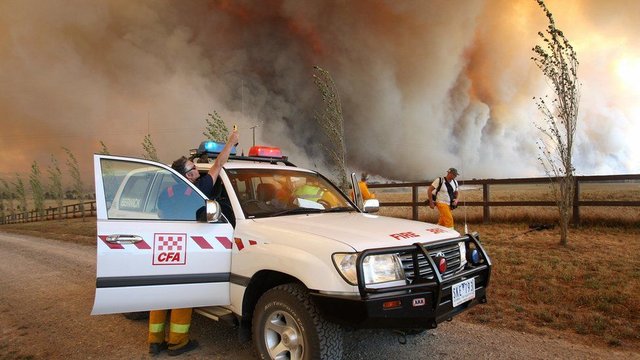
This weekend marks ten years of the worst forest fires in Australia. The disaster, which took place in the state of Victoria, left 173 people dead. Considered as "one of the darkest days in the quiet history" of the country, the so-called Black Saturday left a painful legacy.
"It was like the gates of hell, there's no other way to describe it."
For Tony Thomas, on February 7, 2009 began as any day. The summer had registered temperatures above the records and security alerts had been triggered more than once.
But Thomas was not very worried. In the past there had already been days of a blazing heat.
In the leafy, quiet hills on the outskirts of the small town of Marysville, about 90 km northeast of Melbourne, Thomas and his wife Penni ran a small tourist hostel.
Skip the recommendations
Maybe you're interested too
The photos that explain the uncontrolled wildfire in the world
A "tornado of fire" in California leaves 6 dead and thousands of people evacuated
The breathtaking images of orange skies left by fires in Australia
While the cold hit North America, in Sydney, Australia, the temperature reached 47.3 degrees: the highest since 1939
End of recommendations
Her in-laws had traveled to the place to have lunch and celebrate a birthday. It was a nice meeting, despite the suffocating heat. But, in the afternoon, they spotted smoke in the west. When they approached to observe better, they saw fire.
"He came from the forest behind us, on the other side, 100 km, roared in our direction," Thomas tells the BBC.
At 6:45 pm, the fire hit "and quite hard". Thomas's family and hostel guests rushed to take refuge in the house while he, his brother-in-law and an employee fought the fire.
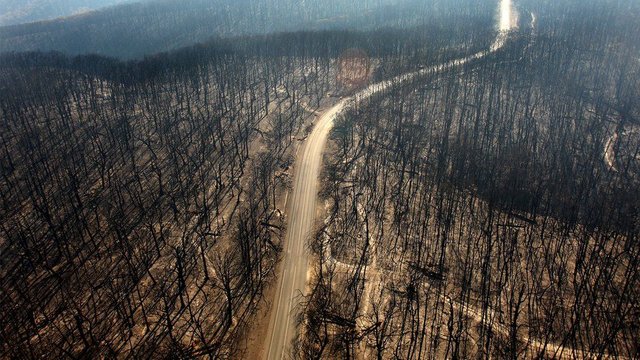
There were three men with buckets and garden hoses against a roar of fire, striking in the wind.
"People say they were the gates of hell because everything turned from light to darkness very quickly." The smoke blocked the sun.
"The only thing that could be seen was the glow of the fire through the smoke, we were suffocating, we only had big tea towels that we wet constantly and wrapped around our faces to breathe."
Fireballs 100 meters high
Nearby, David Baetge also struggled to survive on his property around the town of Buxton, right next to a large state park.
With a vast previous experience in firefighting, Baetge saw the smoke but decided to stay. Like Thomas, the decision would almost cost him his life.
At approximately 6:30 p.m., he saw the flames at the top of the peaks about 3 km away. According to his estimates, the fireballs reached 100 meters in height.
Even for a veteran of the wildfires, the Australian was surprised by the speed with which the fire was moving in his direction.
"The sky was iridescent red, with a deafening roar like that of a 747 jet when you stand next to it," he recalled later in his blog.
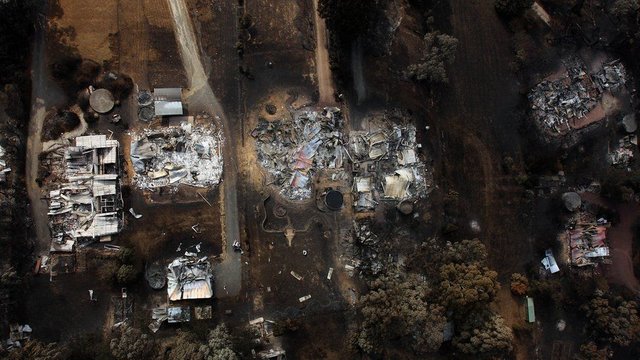
"It was like being inside a cocoon of smoke with a maximum visibility range of about 30 meters, while the entire hemisphere in all directions was bright cherry red."
Throughout this once bucolic landscape, other people faced a similar struggle.
Karen Curnow is one of them. When his house caught fire, he fled with his dog in the car, accelerating through the burning trees. He left the place feeling guilty about having to leave behind his frightened horses.
Near Kinglake West, local artist Michelle Bolmat also shot in her car.
"The ash began to fall, and the darkness came ... it became completely black everywhere," he tells the BBC. A tree fell in front of her; but when the heat began to accumulate, it accelerated and passed over him. "I looked back and saw the fire coming."
Disaster equivalent to 1,500 atomic bombs
The four survived that nightmare night.
But when the sun came up the next morning, everything was disturbingly quiet. The exuberant landscape of other times had vanished.
"Our world changed from beautiful colors, to black and gray," recalls Thomas. "There was not a place on the property that would not burn."
The town of Kinglake suffered the highest number of victims, with 120 deaths. In Marysville, 39 people died, of whom 34 were local residents. The city was destroyed.
"Probably 22 of those 34 were our friends," says Thomas.
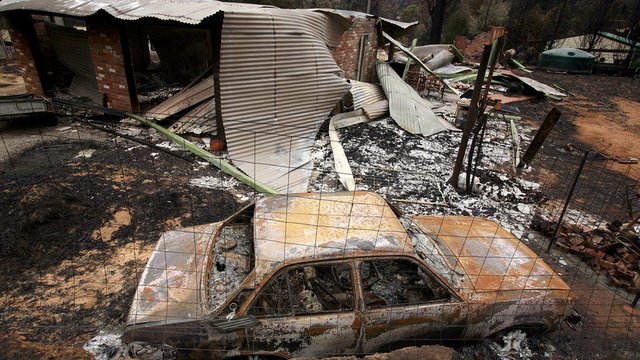
After the last embers were smothered (the Black Saturday fires continued until March 14), the true scale of the fires became known.
Around 400 flares had burned, mostly caused by faulty power lines and lightning, but there were also cases of arson.
A total of 173 people died. It left several hundred injured, more than 2,000 homes destroyed and more than 7,500 displaced people.
The Royal Society for the Prevention of Cruelty to Animals estimated that up to one million animals died.
It was an unprecedented disaster, even when Australia is a country accustomed to forest fires.
Why was it so severe?
Over the years, Australia has been hit with several deadly fires. But those of the Black Saturday of 2009 were singular in their ferocity: they amounted to 1,500 atomic bombs.
What made this event so severe?
Kevin Parkyn, an experienced Australian forecaster of the Bureau of Meteorology, says it was a combination of record temperatures, northwest winds of over 100 km / h, and a dry landscape aggravated by the drought. In Melbourne, the temperature reached 46.4 ℃.
"The city has not registered temperatures like this in 100 years," says Parkyn. "When you went outdoors, there was only a blast of hot air: it was like having a hair dryer on your face."
The firefighters could not do much, especially when the flames hit Australia's highly flammable eucalyptus forests, he says.
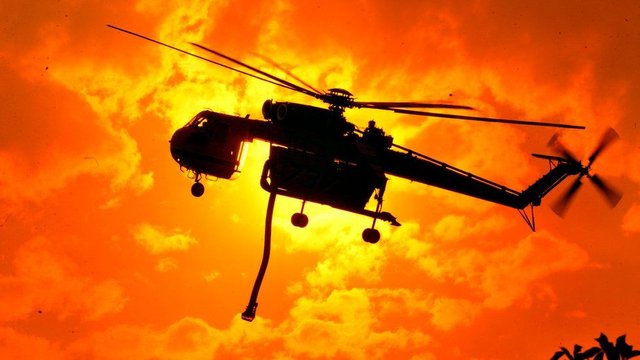
The temperatures were so intense that they were able to melt the metal: "It was almost like a living beast that breathes".
Many have wondered what role climate change played?
Parkyn comments that it would be difficult to say that there is no link, given the record level of temperatures experienced in Australia, as well as the frequency of extreme climatic disasters internationally.
The scientist gives an example of the fires last year in California, one of the deadliest in the United States.
The damage left by Black Saturday was also exacerbated by urbanization, he says.
Risk Frontiers, a research center, estimates that almost one million households in Australia are located within 100 meters of the forests.
Serious psychological disorders
After the fires, an investigation of the real commission was announced, which resulted in generalized changes in the preparation and protocols for this type of events.
The research estimated the financial cost of the disaster at about US $ 3,000 million.
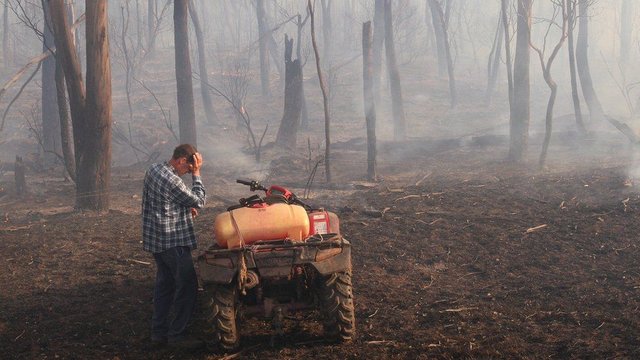
The survivors also obtained a payment of about US $ 354,000, the largest class action settlement in Australian legal history. However, this did not compensate for the invisible damages.
The Beyond Bushfires report, an organization that surveyed more than 1,000 people affected by the fires, found evidence of significant mental health problems such as depression, post-traumatic stress disorder and serious psychological disorders.
Of the embers, however, something good also came out. Australia is now significantly better prepared for fires, with new measures including redesigned building codes and better warning messages.
At the international level, Australian researchers are leading the way in many fire extinguishing technologies and the Beyond Bushfires report is used internationally.
"The city will never be the same"
Regeneration and growth have also taken place on a more personal level. Thomas is surprised by the resistance of the villagers. The communities have been rebuilt, the bushes have been regenerated.
Karen Curnow says the fires gave her the opportunity to start over: "I do not see myself as a victim or a survivor, I consider myself a very lucky person."

This week, several acts of commemoration have marked the 10th anniversary of the tragedy.
Many will be more relieved when these acts end and people can go on with their lives, says Thomas.
Marysville is slowly recovering although "the city will never be the same".
"But as a community we remain united," he says. "We're still here, we're still standing"
Warning! This user is on my black list, likely as a known plagiarist, spammer or ID thief. Please be cautious with this post!
If you believe this is an error, please chat with us in the #cheetah-appeals channel in our discord.
Downvoting a post can decrease pending rewards and make it less visible. Common reasons:
Submit